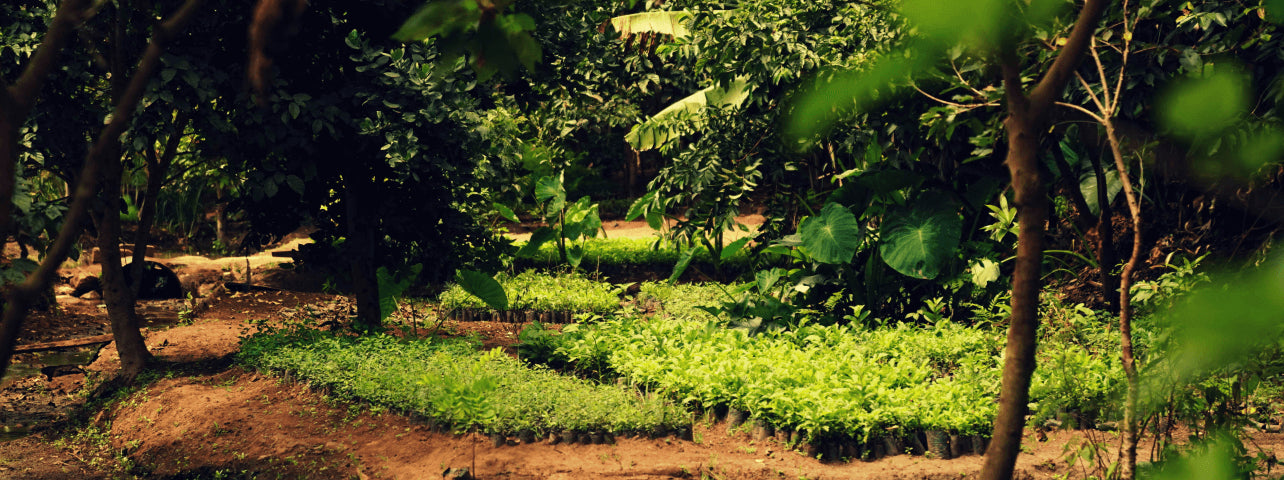The IPCC report highlights: We need to restore our forests now!

Hey tree friends,
Today we want to share with you some of the important take-home messages from the 6th IPCC report focused on the mitigation of climate change.
The IPCC - the intergovernmental panel on climate change - was initiated in 1988 by the World Meteorological Organization and the United Nations Environmental Programme. The IPCC reports provide policymakers with regular assessments of the scientific basis for climate change, its impacts and future risks, and options for adaptation and mitigation.
The results and messages from the IPCC are often daunting and may lead to a feeling of helplessness; they show us how human-induced climate change is a consequence of our unsustainable lifestyle and the patterns of consumption and production. They also scream out that without urgent, effective and equitable mitigation actions, climate change will threaten the health and lives of people around the world, and the health of our ecosystem.
Luckily, we can still remain hopeful as there are solutions and actions that can be taken to prevent the worst case scenario. But there really is no time to wait! It really is a ‘now or never’ situation if we want to avoid difficult climate consequences and protect our amazing planet.
The recent IPCC report focuses on the solutions and actions that can help mitigate climate change effects. We are proud that the work of Grow My Tree in the realm of planting trees and growing forest is one of the important focus areas for positive change.
Some of the key takeaways from the 6th IPCC report are the following:
- Afforestation, reforestation, improved forest management, agroforestry and soil carbon sequestration are currently the only widely practiced CDR (carbon dioxide removal) methods
- Reforestation, improved forest management, soil carbon sequestration, peatland restoration and blue carbon management are examples of methods that can enhance biodiversity and ecosystem functions, employment and local livelihoods, depending on context
- In addition to deep, rapid, and sustained emission reductions CDR can fulfill three different complementary roles globally or at country level:
- Lowering net CO2 or net GHG emissions in the nearterm
- Counterbalancing ‘hard-to-abate’ residual emissions (e.g., emissions from agriculture, aviation, shipping, industrial processes) in order to help reach net zero CO2 or net zero GHG emissions in the mid-term
- Achieving net negative CO2 or GHG emissions in the long-term if deployed at levels exceeding annual residual emissions (high confidence)
- Land-based options such as reforestation and forest conservation, avoided deforestation and restoration and conservation of natural ecosystems and biodiversity, improved sustainable forest management, agroforestry, soil carbon management and options that reduce CH4 and N2O emissions in agriculture from livestock and soil, can have multiple synergies with the SDGs. These include enhancing sustainable agricultural productivity and resilience, food security, providing additional biomass for human use, and addressing land degradation.
And some numbers showing the importance of trees for carbon removal:
- Reforestation/afforestation:
- Has the mitigation potential of 0.5-10 GtCO2/year (the highest of all the methods listed)
- The co-benefits are: enhanced employment and local livelihoods, improved biodiversity, soil carbon and nutrient cycling
- Agroforestry:
- Has the mitigation potential of 0.3-9.4 GtCO2/year
- The co-benefits are: enhanced employment and local livelihoods, improved biodiversity and soil carbon and nutrient cycling
So besides all the other important levers against climate change (a reduction of emissions across all sectors, a reduction of the use of fossil fuels, the improvement of energy efficiency and the transformation to alternative fuels and energy), the work around trees can have tremendous effects on climate change and also improve livelihoods, biodiversity, nutrition and soil!
A recent study demonstrated how using natural climate solutions can deliver up to a third of the emissions reductions needed by 2030 to keep the global temperature increases under 2C, as decided in the Paris agreement. Planting trees, growing forests and protecting existing nature is therefore crucial in our war against climate change.
Having said this, there is no time to waste in order to help restore our world’s forests and protect existing areas from being cut down! Please continue to support us in our journey and support ecosystem restoration by planting and gifting trees!
From trees with love,
Grow My Tree
write a comment
Comments are approved before posting.








